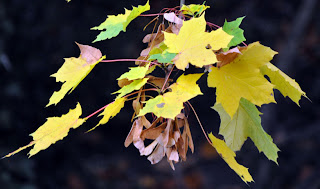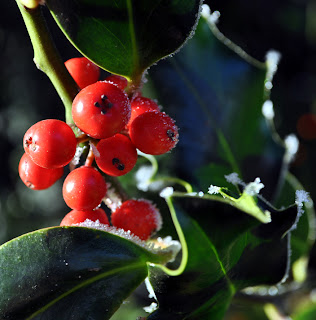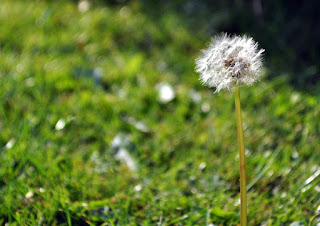Colour Harmony through Complimentary Colours
Red and Green: I created this still life arrangement using jelly babies and white paper for the background. Because it is a close-up image of the sweets, they are difficult to identify as they are out of context. However they do demonstrate the relationship of the colours well.
Blue and Orange: for this image I have created a still life using Smarties. I used sweets for my still life photos because they have very strong colours and can be easily arranged for pleasing and interesting compositions.
Red and Green: here I have found red and green in a natural setting. This is one of my favourite photographs as I love the movement in the poppies. I took the image from a lowdown viewpoint to create interest.
Violet and Yellow: I chose a flower for this combination as it seemed an obvious choice. I could have used sweets in a still life arrangement again, but I was keen to have variety in this assignment.
Colour Harmony through Similar Colours
Blue and Green: this is a scene in the north-west of Ireland. The beautiful colours of the sea and grass demonstrated colour harmony of similar colours very well.
Yellow and Green: by doing this assignment in autumn, the leaves were a natural inspiration for this choice of colour.
Red and Orange: again, by working on this assignment in autumn this colour combination has been in plentiful supply!
Blue and Violet: the colours in this photo are quite subtle, but I think it demonstrates well how these cool colours work together.
Colour Contrast through Contrasting Colours
Red and Yellow: I came upon this image by chance. With friends in France we found the maize and snapped in half - I was so taken by the colours and pattern I had to photograph it.
Violet and Green: for this combination I chose to use a still life. Again I used Smarties as the colour combination was easy to find. I chose to arrange this in this way as I liked the symmetry and close-up view of the sweets.
Blue and Red: I particularly liked the strong contrasting colours in this photo.
Orange and Green: as I mentioned earlier, taking these photos in autumn mean greens, oranges and yellows have been very easy to find in the trees.
Colour Accent using any of the above
Blue and Red: this is one of my favourite photographs, the bleak white/blue of nature in contrast with the tiny area of red on the rubber ring.
Green and Orange: again autumn provided me with an ideal subject for this assignment. As well as the small element of orange I like the softness of the shapes of the leaves in this photo.
Orange and Green: I particularly likes the small but distinct blobs of yellow on this leaf. I also like the detail that I captured in the leaf.
Blue and Orange: there was a small orange sweet in the pack of Smarties so I decided to make use of this for this still life arrangement.

























































